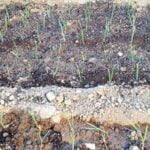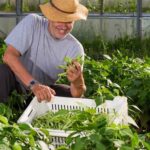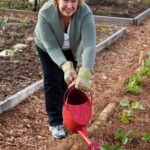Are you interested in growing your own vegetable gardening on Maui? Whether you’re a seasoned gardener or just getting started, there are many benefits to cultivating your own fruits and vegetables in Maui’s unique climate. From enjoying the freshest produce possible to connecting with the local gardening community, there are endless rewards to be reaped.
Maui’s climate offers a unique opportunity for vegetable gardening, with its year-round warm weather and moderate rainfall. By choosing the right vegetables for this environment and understanding the soil and environmental conditions, you can create a thriving garden that provides fresh, organic produce for you and your family.
In this article, we will explore the benefits of growing your own vegetable gardening on Maui, as well as provide valuable tips on choosing the right vegetables, starting and maintaining a successful garden, utilizing sustainable practices, dealing with pests and diseases, and connecting with the local community of vegetable gardeners. Whether you’re new to gardening or looking to enhance your existing skills, this guide will help you make the most of your Maui vegetable garden.
Choosing the Right Vegetables for Maui’s Unique Climate
When it comes to growing your own vegetable gardening on Maui, one of the most important factors to consider is choosing the right vegetables for the unique climate of the island. With its warm and humid tropical climate, Maui presents both opportunities and challenges for vegetable gardening. Here are some tips for selecting the best vegetables to grow on the island:
1. Consider heat-tolerant crops: Maui’s climate lends itself well to heat-loving vegetables such as tomatoes, peppers, eggplant, and sweet potatoes. These crops thrive in the warm temperatures and will produce bountiful yields with proper care.
2. Choose moisture-loving vegetables: With its consistent rainfall and high humidity, Maui is ideal for growing moisture-loving vegetables like cucumbers, zucchini, okra, and leafy greens such as lettuce and kale. These vegetables will flourish in Maui’s environmental conditions.
3. Opt for quick-growing varieties: In a climate where the growing season is extended and relatively consistent throughout the year, it’s advantageous to choose quick-growing varieties of vegetables. This will allow you to have multiple harvests throughout the year and make the most of Maui’s favorable conditions.
By selecting the right vegetables that are well-suited to Maui’s unique climate, you can ensure a successful vegetable garden that will provide you with a bountiful harvest year-round. It’s important to do your research and choose varieties that are known to thrive in tropical environments like Maui. Happy planting.
Understanding the Soil and Environmental Conditions on Maui
Maui’s soil and environmental conditions play a crucial role in the success of your vegetable gardening efforts. Understanding these factors will help you make informed decisions when it comes to choosing the right vegetables and establishing a thriving garden.
The volcanic soil on Maui, rich in nutrients and minerals, provides an excellent foundation for growing a wide variety of vegetables. However, it’s essential to assess the specific characteristics of your local soil to determine its acidity, nutrient levels, and drainage properties.
Conducting a soil test can provide valuable insights and guidance on how to amend the soil for optimal plant growth. It’s also important to consider factors such as sunlight exposure, wind patterns, and rainfall distribution across different microclimates on the island.
Given Maui’s unique climate, which ranges from coastal areas with warm temperatures to higher elevation regions with cooler weather, it’s important to select vegetables that are well-suited to these diverse conditions. Some vegetables that thrive in Maui’s climate include tomatoes, lettuce, kale, bell peppers, cucumbers, and various herbs. It’s also worth considering native Hawaiian plants and heirloom varieties that have adapted to the local environment over time.
When planning your vegetable garden on Maui, take into account the microclimates within your area and their specific environmental conditions. This will help you create micro-environments within your garden space that cater to the individual needs of different plants. Additionally, utilizing sustainable practices such as water conservation and natural pest control methods will contribute to the overall health of your garden while respecting Maui’s delicate ecosystem.
| Maui Soil Characteristics | Recommended Vegetables |
|---|---|
| Volcanic soil rich in nutrients | Tomatoes, lettuce, kale |
| Diverse microclimates with varying temperatures | Bell peppers, cucumbers |
| Consideration of sunlight exposure and rainfall distribution | Herbs (e.g. basil, cilantro) |
Tips for Starting and Maintaining a Successful Vegetable Garden on Maui
Starting and maintaining a successful vegetable garden on Maui requires careful planning, preparation, and ongoing care. Whether you are an experienced gardener or just starting out, here are some tips to help you get the most out of your gardening experience:
1. Choose the Right Location: Select a sunny spot with access to water for your vegetable garden. The ideal location should receive at least 6-8 hours of sunlight each day.
2. Prepare the Soil: Maui’s soil can vary significantly from one area to another, so it is important to test your soil and amend it as needed. Consider incorporating organic matter such as compost or aged manure to improve soil structure and fertility.
3. Select the Right Vegetables: Choose vegetables that are well-suited for Maui’s unique climate and growing conditions. Some popular options include tomatoes, lettuce, peppers, cucumbers, and herbs like basil and cilantro.
4. Practice Water-Wise Gardening: Given Maui’s limited water resources, it is important to practice water-wise gardening techniques such as mulching to retain moisture, using drip irrigation systems, and watering during the cooler parts of the day.
5. Implement Crop Rotation: To minimize pest and disease issues, practice crop rotation by alternating the types of vegetables grown in different areas of your garden each season.
6. Embrace Companion Planting: Planting certain vegetables together can help deter pests, attract beneficial insects, and improve overall plant health. For example, planting marigolds alongside tomatoes can help repel nematodes.
7. Regular Maintenance: Stay on top of weeding, fertilizing, and pest control throughout the growing season to ensure a healthy and productive vegetable garden.
By following these tips and putting in the necessary effort, you can create a thriving vegetable garden on Maui that will provide you with fresh produce for months to come.
Utilizing Sustainable and Organic Gardening Practices
When it comes to vegetable gardening on Maui, utilizing sustainable and organic gardening practices is not only beneficial for the environment but also for your health and the health of the community. By adopting these practices, you can create a more resilient and self-sufficient garden that produces healthy, nutritious vegetables while minimizing negative impacts on the surrounding environment.
Composting and Soil Health
One of the key principles of sustainable and organic gardening is maintaining soil fertility through composting. Composting not only reduces waste by recycling organic materials but also enriches the soil with essential nutrients, promoting healthy plant growth. By creating your own compost pile or bin, you can reduce your carbon footprint while improving the overall health of your garden.
Water Conservation
Maui’s climate can be challenging when it comes to water availability, making efficient water usage a crucial aspect of sustainable gardening. Implementing practices such as drip irrigation, rainwater harvesting, and mulching can help conserve precious water resources while ensuring that your vegetable garden thrives in Maui’s unique environmental conditions.
Natural Pest Control
Incorporating natural pest control methods into your gardening practices can help minimize the use of harmful chemicals while effectively managing pests in your garden. Techniques such as companion planting, attracting beneficial insects, and using homemade remedies for common garden pests can maintain a balance in the garden ecosystem without causing harm to the environment or endangering beneficial organisms.
By incorporating these sustainable and organic gardening practices into your vegetable gardening on Maui, you are not only contributing to the preservation of Maui’s natural beauty but also creating a healthier and more vibrant garden for yourself and your community. These practices go hand in hand with Maui’s commitment to sustainability and are an essential part of promoting resilience and well-being within the local food system.
Dealing With Common Pests and Diseases in Maui’s Vegetable Gardens
Dealing with common pests and diseases is an important aspect of maintaining a successful vegetable garden on Maui. The unique climate and environmental conditions of the island can make it susceptible to certain issues that may affect the health and growth of your plants. By understanding the common pests and diseases that impact vegetable gardens on Maui, you can take proactive measures to prevent and address these problems.
One of the most common pests in Maui’s vegetable gardens is the Hawaiian sugarcane aphid. This pest can attack a variety of vegetables, including tomatoes, peppers, and eggplants, by sucking the sap from the plants, causing stunted growth and yellowing leaves. To combat this pest, it’s important to regularly inspect your plants for any signs of infestation and to use natural predators such as ladybugs to control their population.
In addition to pests, vegetable gardens on Maui are also susceptible to various diseases such as Fusarium wilt and downy mildew. These diseases can be particularly challenging to manage in the island’s warm and humid climate. Choosing disease-resistant varieties of vegetables, practicing crop rotation, and maintaining good air circulation in your garden can help prevent these diseases from taking hold.
| Common Pest/Disease | Preventive Measures |
|---|---|
| Hawaiian Sugarcane Aphid | Regular inspection, use of natural predators |
| Fusarium Wilt/Downy Mildew | Choosing disease-resistant varieties, crop rotation, maintaining good air circulation |
Harvesting and Enjoying the Fruits of Your Labor in Maui
Once your vegetable garden on Maui begins to thrive, it’s time to start reaping the rewards of your hard work. Not only will you have access to fresh, organic produce right in your backyard, but you’ll also get to enjoy the satisfaction of knowing that you grew it yourself. Here are some tips for harvesting and enjoying the fruits of your labor in Maui.
Harvesting at the Right Time
One of the key factors in enjoying a successful vegetable garden is knowing when to harvest your crops. Different vegetables have different ripening times, so it’s important to do some research on each specific type of vegetable in your garden. For example, tomatoes should be picked when they are fully colored and slightly soft to the touch, while lettuce should be harvested when the leaves are full and crisp.
Meal Planning and Recipes
Once you’ve harvested your vegetables, it’s time to start incorporating them into your meals. Creating a meal plan based on what you’ve grown not only ensures that nothing goes to waste but also allows you to truly savor the flavors of your own garden. Look for recipes that highlight the freshness and flavor of each vegetable, such as a simple salad dressed with olive oil and balsamic vinegar or grilled zucchini seasoned with herbs.
Sharing Your Harvest
As you continue growing your own vegetable gardening on Maui, you may find yourself with an abundance of produce. Instead of letting it go bad, consider sharing it with friends, family, or even local community organizations. Sharing your harvest not only spreads the joy of homegrown produce but also strengthens connections within the Maui community. Additionally, sharing can also open up opportunities for trading produce with other local gardeners, further diversifying what ends up on your dinner table.
Connecting With the Maui Community of Vegetable Gardeners and Resources
In conclusion, growing your own vegetable gardening on Maui can be a rewarding and fulfilling experience. The unique climate and environmental conditions of Maui offer a great opportunity for cultivating a diverse range of vegetables. By choosing the right vegetables, understanding the soil, and utilizing sustainable and organic gardening practices, you can enjoy a bountiful harvest while minimizing negative impacts on the environment.
One of the most valuable aspects of vegetable gardening on Maui is the sense of community that comes with it. Connecting with other gardeners in Maui can provide valuable resources, support, and knowledge sharing. Whether it’s through local gardening clubs, community gardens, or online forums, there are plenty of opportunities to connect with like-minded individuals who share a passion for growing their own food.
As you embark on your vegetable gardening journey in Maui, remember to be patient and persistent. While there may be challenges such as pests and diseases to overcome, the satisfaction of harvesting and enjoying fresh produce from your own garden makes it all worth it. So roll up your sleeves, get your hands dirty, and join the thriving community of vegetable gardeners in Maui.
Frequently Asked Questions
What Vegetables Grow on Maui?
Maui’s tropical climate makes it ideal for growing a variety of vegetables such as lettuce, tomatoes, cucumbers, bell peppers, sweet corn, and carrots. The rich volcanic soil and ample sunshine contribute to the success of these crops.
Can You Grow Your Own Vegetables in Hawaii?
Yes, it is possible to grow your own vegetables in Hawaii. The temperate climate and fertile soil make it conducive to gardening. However, it is important to consider factors like water availability and potential pests.
Is It Really Cheaper to Grow Your Own Vegetables?
Growing your own vegetables can be cost-effective in the long run. While there are initial expenses for seeds, tools, and soil amendments, the savings from not having to purchase produce from the store can add up over time. Additionally, there is value in having fresh, organic produce readily available at home.

If you’re looking to get into vegetable gardening, or are just looking for some tips on how to make your current garden better, then you’ve come to the right place! My name is Ethel and I have been gardening for years. In this blog, I’m going to share with you some of my best tips on how to create a successful vegetable garden.





